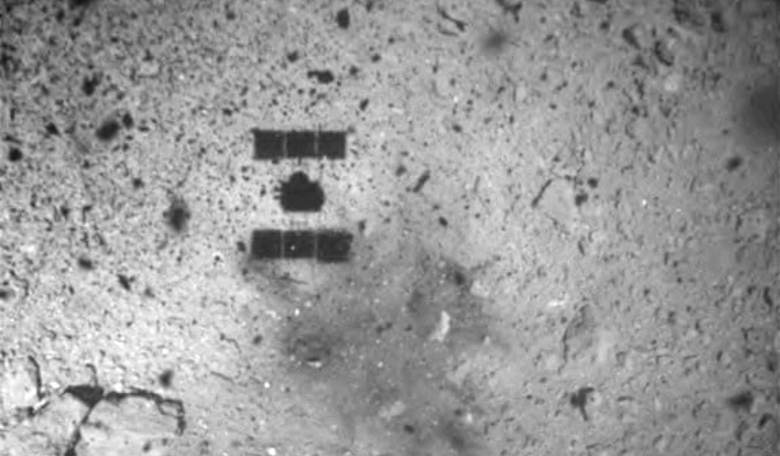Mission control at JAXA had good cause to celebrate last night as their sample-return spacecraft, Hayabusa2, successfully touched down on an ancient asteroid 300 million kilometres from Earth to then fire a metal projectile into the rocky surface and collect any dislodged debris it can grab.
Hayabusa2 headed to its pre-chosen location on the asteroid Ryugu just before 23:00 GMT on 21 February to grab its sample and data analysis from the probe confirms that the sequence of operations proceeded as planned.
“We made a successful touchdown, including firing a bullet,” Yuichi Tsuda, Hayabusa 2 project manager, told reporters. “We made the ideal touchdown in the best conditions,” he said.
Amidst the furore of an excited and packed mission control room who were deservedly celebrating the success of a complex manoeuvre, Hayabusa 2 mission manager Makoto Yoshikawa said the complicated procedure took less time than expected and appeared to go without any problems.
“I’m really relieved now,” said Yoshikawa. “It felt very long until the moment the touchdown happened.”
After a quick celebration, it was back to work for all involved. Hayabusa2 was judged as ‘Go’ for the spacecraft to return to its home position at around 10.30 JST (01.30 GMT) this morning and the probe has since been reported as being in a nominal state.
This will not be the only sample collection opportunity for Hayabusa2 however as later this year, perhaps in March or April, the Japanese space agency plan to dig deeper by detonating an explosive charge that will hollow out a crater on the surface of Ryugu.
This will unearth fresh material that has not been exposed to the harsh environment of space for billions of years and could help scientists understand how our Solar System formed. If it is successfully retrieved by the probe, it will be returned to Earth for analysis with the other samples, in a homeward-bound journey that starts later next year.











